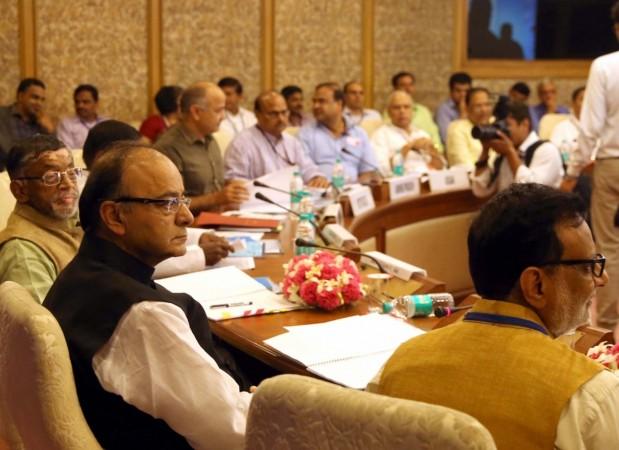
The Goods and Services Tax (GST) Council on Thursday decided on four-tier tax structure of 5%, 12%, 18% and 28%. The lower rates are for essential items, while the highest rates will be applicable for luxury and de-merits goods that would also attract an additional cess.
In the previous meeting for overseeing the implementation of the GST, the apex body could not agree on the issue of the standard rate and the levy of cess to compensate for revenue loss to states. To keep inflation under check, essential items including food will be taxed at zero rate, while the 5% rate would be applicable on common use items.
Finance Minister Arun Jaitley, while announcing the decisions arrived at the first day of the two-day GST Council meeting, said the highest tax slab will be applicable to items which are currently taxed at 30-31% (excise duty plus VAT).
Luxury cars, tobacco and aerated drinks will be levied with an additional cess on top of the highest tax rate.
Meanwhile, Radhika Rao, economist, group research, DBS Bank, said: "In light of S&P's decision to reaffirm (not raise) India's sovereign ratings yesterday and only modest gains in the World Bank's ease of doing business rank earlier this week, focus will be implementation of key reforms. Key amongst this is the Goods and Services tax bill, for which crucial decisions are due this month."
The government was hopeful of a positive outcome at the meeting that commenced on Thursday. "Our effort is to decide on all matters through consensus. We want everyone to come around on all issues," Minister of State for Finance Arjun Ram Meghwal told PTI.
"There may be times when Tamil Nadu or Kerala or West Bengal or Uttar Pradesh have said something different but we will get them around. We are confident that the GST will be rolled out from April 1 2017... all issues would be sorted out before that," he added.









!['Had denied Housefull franchise as they wanted me to wear a bikini': Tia Bajpai on turning down bold scripts [Exclusive]](https://data1.ibtimes.co.in/en/full/806605/had-denied-housefull-franchise-they-wanted-me-wear-bikini-tia-bajpai-turning-down-bold.png?w=220&h=138)



